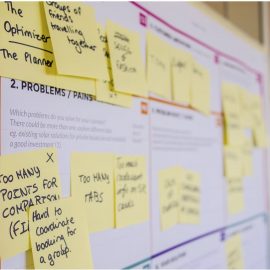

This article is an excerpt from the Shortform book guide to "Coaching for Performance" by Sir John Whitmore. Shortform has the world's best summaries and analyses of books you should be reading.
Like this article? Sign up for a free trial here.
What is an ownership mindset? How can you foster this type of mindset as a leader or manager?
According to Sir John Whitmore, when your employees have an ownership mindset at work, they’ll be better equipped to make decisions and accomplish their goals. In Coaching for Performance, Whitmore offers three tips for creating an ownership mindset in the workplace.
Read on to learn how to foster an ownership mindset, according to Whitmore’s three tips.
Give Your Team an Ownership Mindset
In Coaching for Performance, which describes several coaching strategies to help employees reach their full potential, Sir John Whitmore claims that leaders should help their employees develop an accountability and ownership mindset to increase their commitment to their work and maximize their potential. When workers feel they have ownership of their goals and can decide the best way to accomplish them, they’re motivated to do their best, which improves their performance.
(Shortform note: Research shows that leaders can also drive performance and improve outcomes by endowing employees with a different kind of ownership: financial ownership in the company. Financial ownership is linked to greater job stability, retention during recessions, and company survival, which may lead to less unemployment and greater macroeconomic stability.)
Whitmore’s Three Tips
To build your employee’s sense of accountability and an ownership mindset, follow these three tips to ask engaging questions that allow you to gather information about what’s important to them:
Tip 1: Ask open-ended questions. Open-ended questions yield more candid, detailed answers than yes or no questions, which typically prompt one-word answers and shut conversations down. Examples of open-ended questions include “What’s your goal?” “What barriers are limiting you?” “What resources are available to you?” and “What steps will you take?”
(Shortform note: Open-ended questions are also good if you’re trying to get a tight-lipped child to open up. When you ask them open-ended questions like, “What was the most interesting thing you did at school today?” you communicate that they and their feelings are important. This, in turn, strengthens their self-esteem and self-image.)
Tip 2: Use non-judgmental words. Use non-critical language to cultivate trust, create a safe space for your employee to open up, signal interest, and gather information. Words that foster positive engagement include, “What?” “When?” “Who?” and “How many?” For example, “What are your thoughts on this issue?” and “When do you think is a good time to take action on this?”
One caveat: Whitmore recommends that you avoid “why” questions (for example, “Why did you make that decision?”) because they can make your employee defensive. Also be cautious with “How” questions (for example, “How did you make that decision?”) because they can put your employee into an analytical mindset, taking them out of the observational mode key to building awareness.
(Shortform note: To strengthen your practice of using non-judgmental words to create trust and a safe space for your employee, re-evaluate your relationship to judgment. When you regularly practice non-judgment—letting go of automatic judgments—you neutralize thoughts, feelings, and perceptions that can be toxic when left unchallenged. In doing so, you create a more peaceful state and space in your mind to appreciate life’s beauties and see people and situations for what they are—as opposed to your assessment of what they are.)
Tip 3: Follow broad questions with detailed questions to pursue your employee’s interests. Once you have a big-picture understanding of what your employee is saying, ask more in-depth questions to prompt them to think more deeply about what matters to them. The more they talk about things they care about, the more engaged they’ll be in the coaching process, which helps to build an ownership mindset as they become more interested in taking ownership of their work.
To ask more detailed questions, add a single emphasis word into sentences to deepen your employee’s focus. For example, after they answer the question, “What do you want?” follow up with, “What more do you want?” Or, follow “What could you do?” with “What else could you do?”
(Shortform note: Experts say that companies can strengthen their employees’ ownership mindset by aligning workers’ roles and responsibilities with broader company goals. When companies explicitly communicate why employees’ work matters and how it supports the broader vision, workers gain confidence and proactively claim ownership.)

———End of Preview———
Like what you just read? Read the rest of the world's best book summary and analysis of Sir John Whitmore's "Coaching for Performance" at Shortform.
Here's what you'll find in our full Coaching for Performance summary:
- A guide on the ins and outs of performance coaching
- Strategies to maximize employees’ potential and performance
- How to measure organizational culture and the impact of your work






